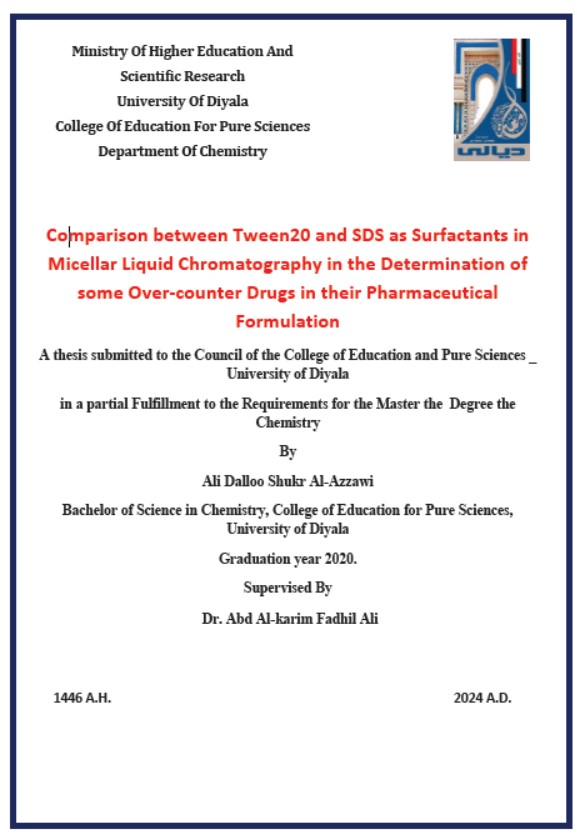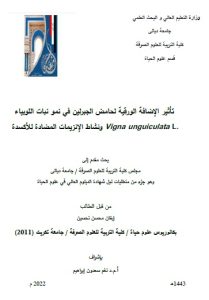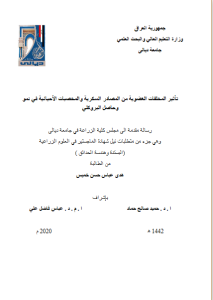Abstract
Green analytical chemistry utilizes environmentally friendly procedures with little to no impact on the environment. Micellar liquid chromatography (MLC) is considered a green modification to the reversed phase-high performance liquid chromatography (RP-HPLC) because it reduces the use of toxic organic solvents such as acetonitrile and methanol. Instead, it employs 100% aqueous mobile phases.
This thesis presents a comparative study between the use of sodium dodecyl sulfate (SDS) and Tween 20 as mobile phase/stationary phase modifiers, Both surfactants were used at concentrations above their critical micellar concentration (CMC). The first comparison included the temperature variation versus the retention factor of the three resolved analytes aspirin (Asp), caffeine (Caf), and paracetamol (Par). For both surfactants, the retention factor decreases as the temperature increases was noticed. Further investigation was carried out by plotting the natural logarithm of the retention factor versus 1/T (van’t Hoff equation) showed curved relation (two linear sections of different slopes) which indicates the presence of more than one retention mechanism (partitioning of the analytes between the mobile phase/micelles/stationary phase).
The second comparison was the retention mechanism and retention sequence of the three analytes. Both methods successfully resolved all three analytes at room temperature and pH=3.0 or less. However, using the nonionic Tween20, Caf was the least retained analyte, followed by Par. Asp was the most retained molecule. Meanwhile, using the anionic SDS show a different retention mechanism in which Par eluted first, followed by Asp. The most retained analyte was Caf due to its positive charge at pH=3.0 or less. It clearly shows that the presence of Tween20 changed the retention mechanism from pure reversed phase retention mechanism to a mixed mode in which the hydrogen bonding plays a major role in it. On the other hand, the anionic surfactant SDS changed the retention mechanism to mixed mode and the ion pair retention mechanism was dominant.
Presicion and accuracy for both methods were evaluated through linearity, RSD%, and % recovery, Both surfactants showed excellent linearity. Par, Asp, and Caf calibration curve has R2= 0.9981, 0.9958, and 0.9924 respectively using SDS with RSD% ranged between 0.492-10.8 and R2= 0.997, 0.9938, and 0.9976 using Tween20 with RSD% ranged between 0.462-7.35.




